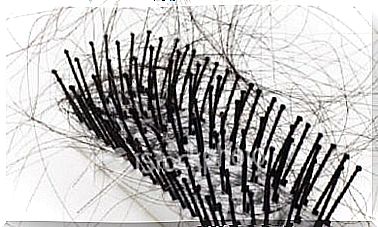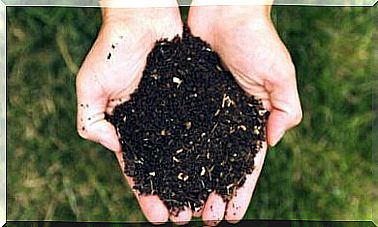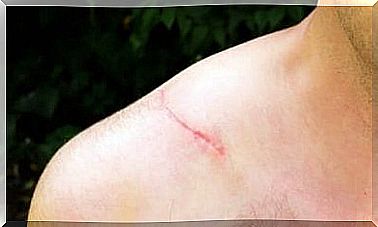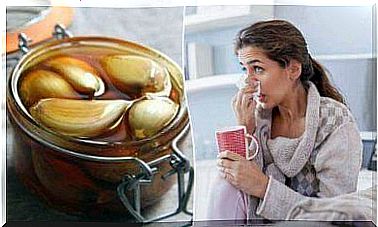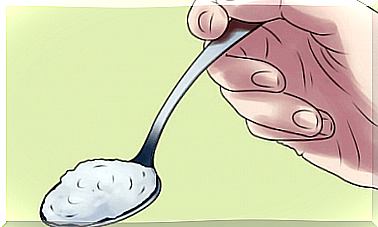Spinal Osteoarthritis: Origin And Treatment
Spinal osteoarthritis describes the degeneration of the nucleus pulposus, the inner gelatinous nucleus of the intervertebral disc. This loses its thickness and density, especially with age, and wears out over time.
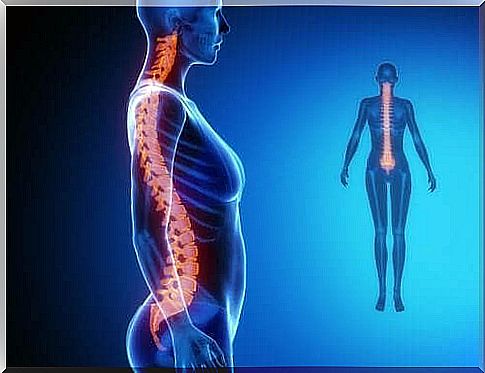
With the spinal osteoarthritis degeneration of the nucleus pulposus is referred to, the inner nucleus pulposus of the intervertebral disc. This loses its thickness and density, especially with age, and wears out over time.
Development of spinal osteoarthritis

During adolescence, the intervertebral disc is thick and gelatinous. However, over the years it becomes dehydrated and due to the changing composition of the nucleus pulposus it loses height.
From the age of 30 to 40, it is normal for the intervertebral disc to show the first signs of wear. These can be seen at a certain level of the spine; regardless of whether there is pain or not.
When the intervertebral disc wears out, its cushioning capacity decreases, the load increases and the bone grows, which can result in osteophytes (bony outgrowths) or so-called parrot’s beaks, in which neighboring vertebrae connect with one another.
These symptoms only lead to problems if they cause a spinal stenosis or narrowing of the spinal canal or if the nerve is compressed. The occurrence of this process and its progression are influenced by genetic, nutritional, traumatic and mechanical factors.
80 percent of the population will suffer from back pain at some point. In addition, adults over a certain age show signs of intervertebral disc wear.
Risk factors
The following results were found in various studies:
- Being overweight does not accelerate the wear and tear of the intervertebral disc. On the contrary, a progressive increase in body weight of twelve kilograms delays degeneration. However, the effects of being overweight are unknown.
- Tobacco consumption has negative effects.
- Working with heavy loads has a minimal impact on wear and tear.
- Genetic predisposition is the main factor behind disc wear.
Symptoms of spinal osteoarthritis
Common symptoms of spinal osteoarthritis include the following:
- recurring lower back pain
- Stiffness of the spine in the morning, which decreases during the day and with increased activity
- Lower back pain radiating to the buttocks, thighs and pelvic region
- Loss of strength in the legs
- sore and stiff neck
- Limited mobility of the spine and difficulty bending and walking
The more the intervertebral disc wears out, the more work the muscles have to do to support them and ensure balance when moving. If the muscles are sufficiently strong and resilient and the various muscle groups are appropriately coordinated with one another, they can apply this additional force.
However, numerous studies have shown that there is no connection between the degree of wear and tear on the intervertebral disc and the occurrence of pain. The better the muscles are developed, the less a direct connection can be seen. For this reason, there are people in whom the degeneration has already progressed but does not experience pain.
diagnosis
Spinal osteoarthritis is diagnosed based on symptoms such as pain, stiffness, and limited mobility. An exam is also being considered to examine the pain and reduced mobility of the lumbar spine.
Additional examinations that are often used are x-rays of the spine.
treatment
The goal of treatment is to relieve pain and improve quality of life. Various alternatives are available for this: physical measures, medication and surgery.
Treatment also includes giving pain relievers such as paracetamol. If these are not sufficient, anti-inflammatory drugs can also be used during the acute pain phase. In those cases where this is not possible, they can be replaced by opioid analgesics such as tramadol.
Neurological complications can occur in people affected by osteoarthritis of the spine . For example, a compressed nerve or spinal stenosis may require treatment with other drugs such as pregabalin or gabapentin.
The support of a physiotherapist is also helpful. A combination of all of these measures can reduce the symptoms of osteoarthritis of the spine.
